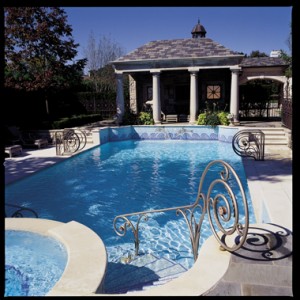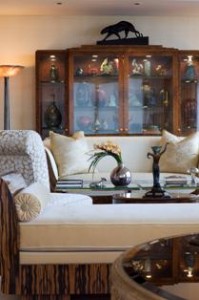
Clients often want to handle all of the various communications with all of their vendors because they think this is what they need to do to ensure they save costs on a designer’s fees. Usually this is a big mistake and will certainly be more expensive in the long run. Most clients don’t know what needs to be done to ensure a flawless project and they don’t let the designer know everything so mistakes are bound to happen. I currently am involved with a long range project and I cannot get information out of the architect or builder without going through the client (who is an extremely busy man) or his assistant (who has never done anything like this before). So when I question the electrical locations or the HVAC vents I am told this is not my expertise and to not get involved with these issues. Then I need to let them know that the lighting in our millwork will not work, the TVs won’t likely fit in the custom cabinets and they won’t have any A/C in their living room if they don’t move the vent from behind the cabinet I am supplying. And please let me know what stone you have bought on a whim and what the pattern is so I know what fabrics to select! Whew, my head is spinning just at the thought of what the implications can be if the communication is not there on either part!
For the Client
It is always best to allow the designer to be a part of all conversations so he/she knows what is happening with all aspects of the project. Everything is important — from how a door swings, to the locations of the electrical, to the windows, to the appliances and the audio/video. Designers choose to govern all aspects of a custom home and keep the client informed so they know what is happening and ask that they participate in the meeting so we all know what is happening on a regular basis. Weekly meetings are a perfect method of getting all parties to communicate well with each other.
For the Designer
As for the designer’s responsibility, you have been hired by the client — not the architect, nor the builder, so remember your loyalties are with the client and you need to be a facilitator to make certain the client knows everything which is being proposed. If a vendor is not up to your standards, you need to make the client aware of your feelings and see what you can do to ensure the vendor will do their very best. Also, only recommend the best vendors you are aware of…if there is a limitation to a certain vendor, explain why and allow your client to make the decision whether or not to use that vendor, but be aware of all that transpires so you can be of service to your client.
I had worked with an audio/video company for years and they were pretty good until they got too big and no longer provided adequate services. At that time, I had several projects they had ruined and I had to find another source for my clients to work with to rectify the faulty work done. We did this at no charge to my clients and saw this through to a successful conclusion.
For the Designer and the Client
Communication is never a waste of time…it can only save costs, so please make certain everyone is aware of all aspects of the project and keep all of your relationships on a friendly, respectful and businesslike level so you can successfully recommend them again.
